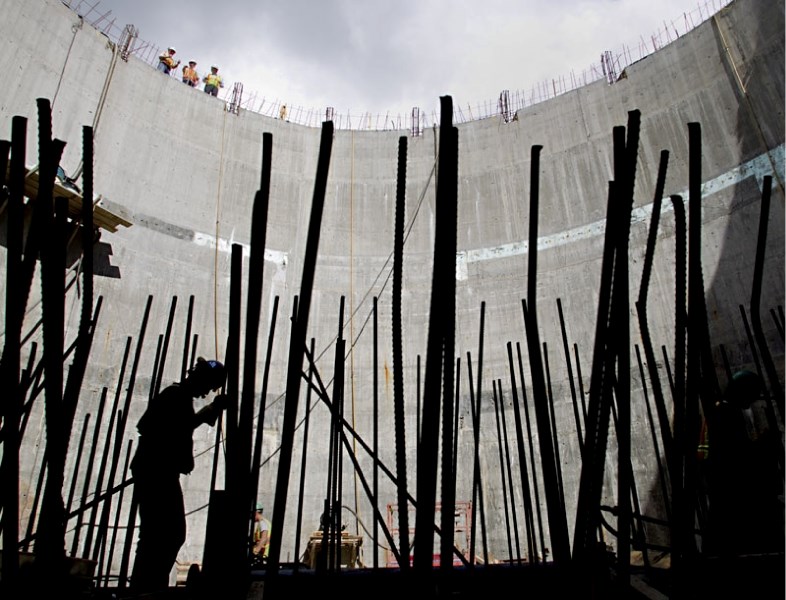The Simonsmeiers seem to have a thing for sewage pumps.
Gus Simonsmeier built St. Albert's first pump station in 1975. His son, Ron, built the second next to it in 1990. And now Ron's son, Andrew, is building the third one next to that.
And they're tough to build, says Ron Simonsmeier, owner of Alberco Construction Ltd., since you're putting massive structures on swamp-like soil.
"I guess we enjoy the challenge," he says.
Simonsmeier's crews have been working on St. Albert's newest sewage pump station on Sturgeon Road since about 2008, and have just finished its biggest component: a round concrete tank that's 21 metres wide and six stories deep.
This tank will take all of St. Albert's sewage and pump it to the treatment plant near Fort Saskatchewan as of next year, says Gil Carleton of the Alberta Capital Region Wastewater Commission. And if it's working right, you won't smell a thing.
Big stone sinker
Simonsmeier and Carleton took the Gazette on a tour of the site earlier this week.
St. Albert is growing, Carleton says, and its two pump stations aren't big enough to handle any more people. Even if the commission bulked those stations up, they'd still need a new one in five years. "We decided, you know what? It's time for a new building."
Design work on the new $19-million pump station started in around 2008, Carleton says, with actual construction beginning last October. Residents soon saw a 30-metre-tall crane towering over the fences next to a growing mountain of dirt.
Pump stations are usually built at a community's lowest point to take advantage of gravity, Simonsmeier says. "The water table is quite high there," he notes, which means the soil is like quicksand. "Your feet go down and you can't get out of it." That made conventional construction methods impractical.
Instead, crews used a technique called open-caisson construction. First, workers built a four-metre-tall circular section of the tank on the surface. The bottom of this concrete ring was knife-edged so it could cut through the soil.
They then used a clamshell crane to grab dirt out of the middle of the ring. "As you dig inside," Simonsmeier says, "[the ring] starts sinking into the ground," pushing more dirt into the middle. Once the ring was flush with the surface, they built another ring on top of it and kept digging.
The tank filled to about nine metres deep with groundwater as it sank, Carleton says — crews deployed a raft in case anyone fell in. When crews finished the walls, they pumped out the water and poured a three-metre thick concrete slab to seal the bottom and keep the tank from floating due to the groundwater. "They wanted to make sure there's enough weight in there so it stays down."
Two-part cup
Carleton looks down into the tank. Workers who, from above, appear to be the size of Lego blocks are hammering away at its base, installing steel pipes lowered in by crane.
"What these boys are putting in right now is a connection between the wet-well side and the pumps," he explains. St. Albert's sewage will blast into the tank through a metre-wide pipe at about 2,300 litres per second — fast enough to fill an Olympic-sized swimming pool in 18 minutes.
The water will pass through a roughly three-metre-by-three-metre grinder to mash any large objects that may have been flushed before falling into a pool. Five pumps will push the water through a concrete divider in the tank to two output pipes on the other side that lead to the treatment plant.
The project is about three months behind schedule due to the weather, Carleton says, but it should still be ready by the end of 2012. It will support 110,000 people, and should last until 2040.
It should also be stink-free, he adds. The old stations had no smell controls beyond some tight seals, which allowed odours to permeate the surrounding neighbourhood. The new one will use UV-ionized air to neutralize any smelly particles before they leave the building.
Any questions on the project should go to Simonsmeier at 780-459-7110.




